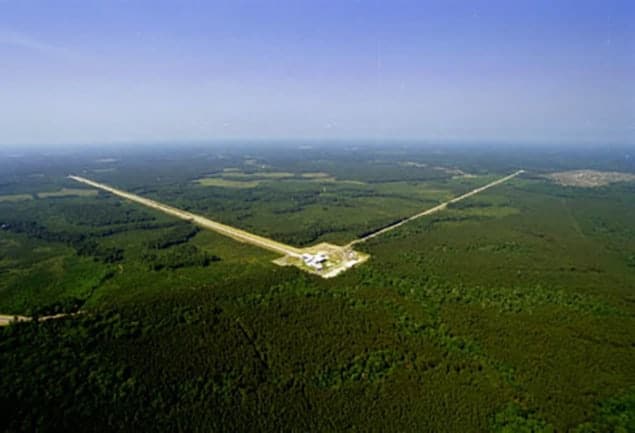Flash Physics is our daily pick of the latest need-to-know developments from the global physics community selected by Physics World‘s team of editors and reporters

LIGO resumes search for gravitational waves
The Laser Interferometer Gravitational-wave Observatory (LIGO) – a pair of gravitational-wave detectors in Hanford, Washington, and Livingston, Louisiana – have been turned back on following almost a year of upgrades. On 11 February, the LIGO collaboration announced the first-ever direct observation of gravitational waves, which were generated by the collision of two black holes 1.3 billion light-years away. This was followed by the announcement of a second gravitational-wave detection on 15 June, also from merging black holes. The detections were made during LIGO’s first run from September 2015 to January 2016, and since then engineers have been making improvements to the facility’s lasers, electronics and optics. The Livingston detector now has about a 25% improvement in sensitivity, allowing it to spot black-hole mergers at greater distances. The sensitivity of the Hanford detector, meanwhile, is similar to the first run, however the power of the laser has been increased and the detector is more stable, increasing the time that the detector is operational. “Already LIGO has exceeded our expectations, and, like most of the scientific world and beyond, I am excited to see what a more sensitive, upgraded LIGO will detect next,” says National Science Foundation director France Córdova. The detectors are now expected to run for around six months before undergoing further maintenance and upgrades.
Sound could move magnetic domain walls
Sound waves could be used to move magnetic domain walls in ferromagnetic and antiferromagnetic materials – according to calculations done by Se Kwon Kim, Daniel Hill and Yaroslav Tserkovnyak at the University of California, Los Angeles. The effect, which has yet to be verified in the lab, could be used to generate magnetic solitons in insulators and could even find use in racetrack memories that store data in magnetic domain walls. The trio looked at a 1D magnetic wire in which the magnetization tends to point along the direction of the wire. The domain walls, therefore, are regions along the wire where the magnetization rotates out of the direction of the wire to achieve a reversal in the magnetization direction. The trio’s calculations focussed on quantized transverse vibrations – called phonons – that can travel along the wire. These phonons can be circularly polarized (and carry angular momentum) or linearly polarized (carrying no angular momentum). The calculations show that a domain wall can be moved by circularly polarized phonons, which exert a torque on the wall when they encounter it. More surprisingly, the research also suggests that linearly polarized phonons will move a domain wall in an antiferromagnetic wire by simply transferring linear momentum to the wall. The research is described in Physical Review Letters.
Smallest known asteroid is also one of the brightest

The smallest known asteroid measures just 2 m across and is also one of the brightest near-Earth asteroids ever discovered – reflecting 60% of the sunlight that strikes its surface. Dubbed 2015 TC25, the asteroid was discovered in 2015 by the University of Arizona’s Catalina Sky Survey and has now been studied in great detail by a team led by Arizona’s Vishnu Reddy. The researchers used four Earth-based telescopes to characterize the asteroid and they report their findings in The Astrophysical Journal. Reddy believes that the surface of 2015 TC25 is similar to an aubrite, which is a rare type of highly reflective meteorite. Aubrites consist of very bright minerals, mostly silicates, which formed in an oxygen-free environment at very high temperatures. “You can think of it as a meteorite floating in space that hasn’t hit the atmosphere and made it to the ground – yet,” says Reddy. “It’s especially important to study the physical properties of small near-Earth asteroids because of the threats these objects pose to us,” adds Stephen Tegler of Northern Arizona University, who was also involved with the research.
- You can find all our daily Flash Physics posts in the website’s news section, as well as on Twitter and Facebook using #FlashPhysics.



